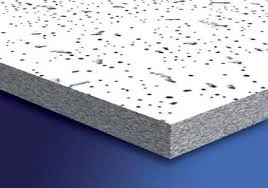9 月 . 11, 2024 02:40 Back to list
High-Quality Fiber Ceiling Materials for Superior Acoustic Performance
Understanding Fiber Ceiling Materials A Modern Solution for Acoustics and Aesthetics
In contemporary architecture and interior design, the choice of materials plays a pivotal role in creating spaces that are not only visually appealing but also functionally effective. One such innovative option that has gained traction in recent years is fiber ceiling materials. These materials offer a blend of aesthetic qualities and acoustic performance, making them an excellent choice for various settings, including offices, schools, hospitals, and residential spaces.
Fiber ceiling materials are primarily composed of natural or synthetic fibers that are often combined with other materials to enhance their properties. The most common types include mineral fiber, glass fiber, and polyester fiber ceilings. Each type comes with its own set of benefits and applications, catering to different design requirements and budget constraints.
One of the most significant advantages of fiber ceiling materials is their excellent sound absorption properties. In environments where noise control is essential—such as libraries, conference rooms, and open-plan offices—using fiber ceilings can dramatically improve acoustic comfort. The porous nature of these materials allows them to trap sound waves, reducing echo and preventing the build-up of ambient noise. Studies show that by lowering sound reverberation times, fiber ceilings can enhance productivity and overall well-being in workplaces.
fiber ceiling materials

Beyond their acoustic benefits, fiber ceiling materials are also highly versatile in design. They come in a variety of textures, colors, and patterns, allowing designers to be creative while maintaining functionality. From sleek, modern designs to more textured, organic looks, fiber ceilings can complement virtually any interior style. Additionally, they can be easily cut and shaped to fit unconventional spaces, making them suitable for both new constructions and renovations.
Another key feature of fiber ceiling materials is their sustainability. Many manufacturers produce these materials using recycled content and eco-friendly processes. For environmentally conscious building projects, fiber ceilings can be an ideal choice. Furthermore, they often carry certificates such as LEED (Leadership in Energy and Environmental Design), making them suitable for green building initiatives.
Maintenance is another important consideration. Fiber ceilings are generally easy to clean, with some options being resistant to stains and moisture. This characteristic is particularly valuable in commercial settings where hygiene standards are critical. Regular dusting and occasional damp cleaning can keep these ceilings looking fresh and new, extending their life and aesthetic appeal.
In conclusion, fiber ceiling materials stand out as a modern solution in the realm of architecture and design. Their impressive acoustic performance, aesthetic flexibility, sustainability, and low maintenance make them a practical choice for diverse applications. As architects and designers continue to explore innovative ways to create comfortable and efficient spaces, the popularity of fiber ceilings is likely to grow, proving that form and function can indeed go hand in hand. Embracing these materials can lead to environments that not only look good but truly feel good to be in.
-
Revolutionizing Interior Design with Ceilings t grid Suspended SystemNewsOct.29,2024
-
Revolutionizing Ceiling Design with ceiling access panel with Gypsum Tile WaterproofNewsOct.29,2024
-
Revolutionizing Interior Design with PVC Gypsum Ceiling: A Comprehensive GuideNewsOct.29,2024
-
Elevating Interior Design with High quality Mineral Fiber Ceiling TilesNewsOct.29,2024
-
Revolutionizing Interior Design with PVC Gypsum Ceiling: A Comprehensive GuideNewsOct.29,2024
-
Elevating Interior Design with High-Quality Mineral Fiber Ceiling Tiles: A Comprehensive GuideNewsOct.29,2024







